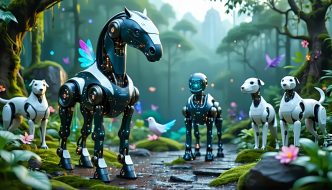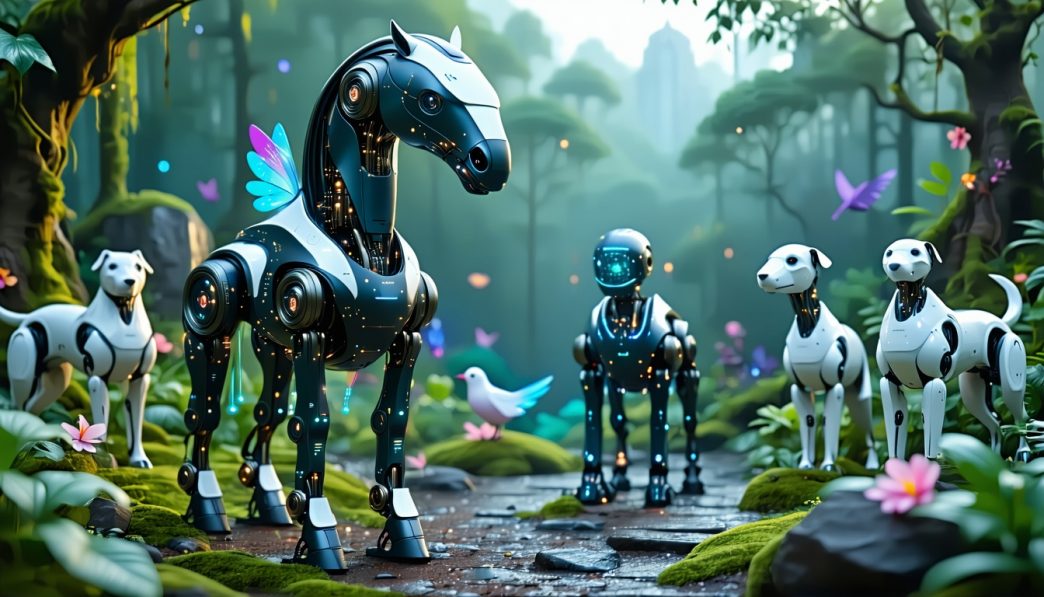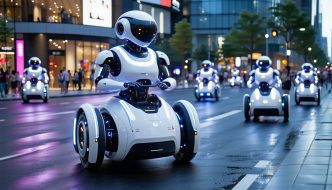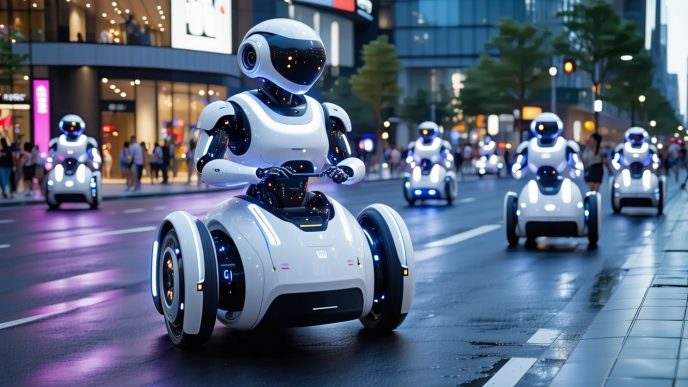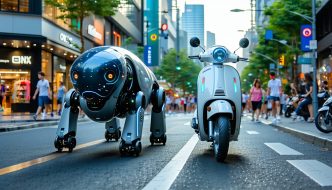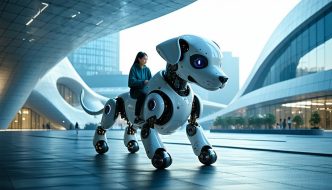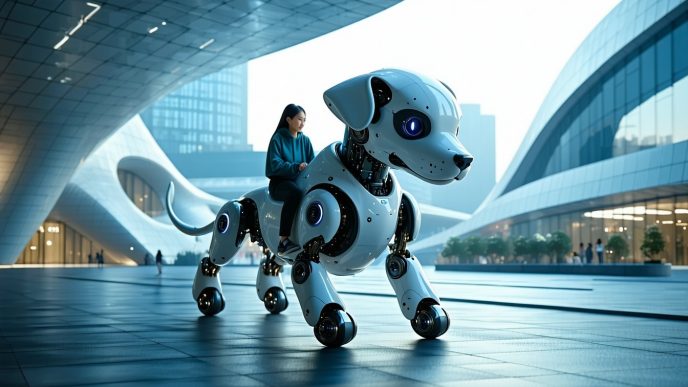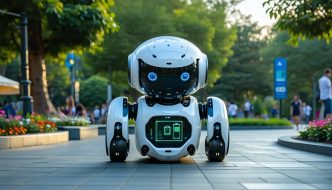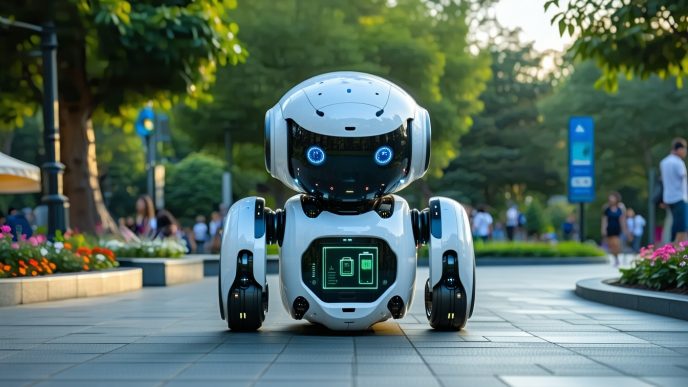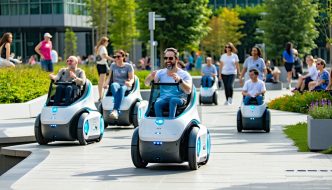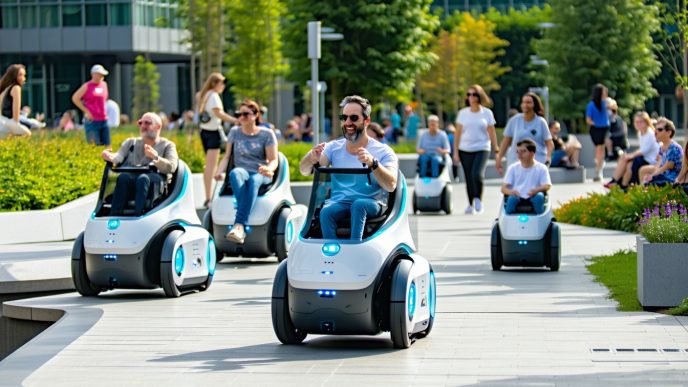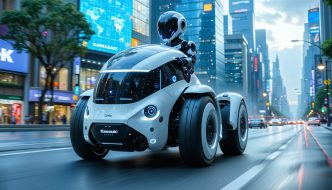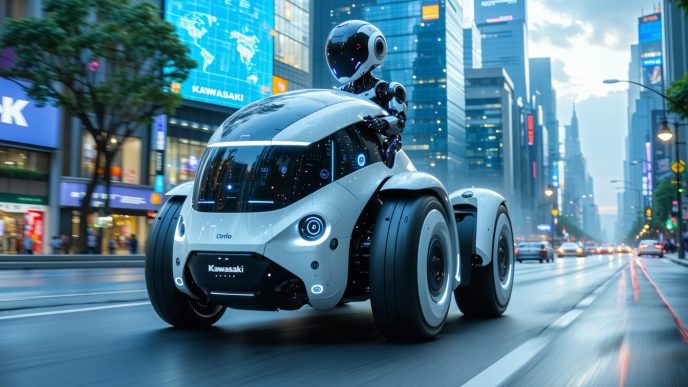Introduction to Rideable Animal Inspired Robots
The Concept of Rideable Robots
Rideable robots, particularly those inspired by animals, represent a fascinating branch of robotics. They combine functionality with an understanding of natural movement, allowing for an engaging and practical user experience. The idea behind these robots is to mimic the way animals move and can be ridden just like traditional mounts. This innovative concept not only addresses mobility challenges but also opens up new avenues for interaction and utility in various sectors.
These robots are designed with comfort and usability in mind, often featuring ergonomic seats and intuitive controls. Many designs are targeted at specific applications, such as enhancing recreational experiences or providing assistance for those with mobility impairments. The integration of advanced technology allows these rideable bots to navigate a range of environments, making them versatile tools for both personal and commercial use. For further insights into the general category of robots, check out our article on rideable robots.
Evolution of Animal-Inspired Bots
The evolution of animal-inspired robots has been marked by significant technological advancements. From early prototypes that resembled simple remote-controlled machines to sophisticated bots that replicate the intricate movement patterns of animals, this field has seen remarkable progress. Initial models focused on basic mobility, but as research and development advanced, so did the complexity of these machines.
In the early stages, designs often utilized basic materials and linear movements. However, modern innovations have introduced a variety of materials and technologies that allow for more fluid and realistic movements. The integration of sensors and artificial intelligence has enabled these robots to better perceive their surroundings and adapt accordingly.
Below is a timeline highlighting key milestones in the evolution of rideable animal-inspired bots:
| Year | Milestone |
|---|---|
| 1990s | Early prototypes of animal-like robots are developed. |
| 2000s | Introduction of basic motor functions and control systems. |
| 2010s | Advancements in AI lead to improved navigation and interaction capabilities. |
| 2020s | Commercial prototypes like Kawasaki Corleo Robot and Xiaomi Cyberdog 2 Rideable Concept are unveiled. |
Animal-inspired bots have not only gained popularity for their novelty but also for their practical applications in fields ranging from agriculture to entertainment. As technology continues to advance, the potential for these robots to solve real-world challenges will likely grow, paving the way for new innovations and integrations in everyday life.
Practical Applications in Various Industries
Rideable animal-inspired robots, such as robot horses, have garnered attention for their potential applications across multiple sectors. Their innovative designs and functionalities make them suitable for a wide range of practical uses.
Agriculture and Farming
In agriculture, robot horses and similar bots can assist in tasks such as crop monitoring, transportation of goods, and even herding livestock. These machines can navigate through fields and uneven terrains efficiently, reducing the need for manual labor while enhancing productivity.
The following table outlines some typical applications of rideable robots in agriculture:
| Application | Benefits |
|---|---|
| Crop Monitoring | Real-time surveillance of crop health. |
| Transport of Goods | Reduced labor costs and increased efficiency. |
| Herding Livestock | Improved management and control of animals. |
For more information on how rideable robots can enhance farming practices, refer to our article on rideable robots.
Entertainment and Theme Parks
In the entertainment industry, rideable animal-inspired bots are transforming visitor experiences at theme parks and events. These robots can serve as interactive rides, providing unique experiences. They attract visitors looking for innovative entertainment options while ensuring safety and fun.
Here are some notable use cases for rideable robots in this sector:
| Use Case | Description |
|---|---|
| Interactive Rides | Offering themed rides that simulate animal movement. |
| Educational Displays | Engaging guests with demonstrations of robot technology. |
| Event Performances | Showcasing robots in performances to attract larger crowds. |
For examples of advanced rideable concepts, check our article on the Xiaomi CyberDog 2 rideable concept.
Security and Surveillance
Rideable animal-inspired robots also hold significant potential in the security and surveillance industry. With their ability to traverse diverse environments, these robots can patrol large areas, monitor activities, and assist security personnel.
The following table summarizes the advantages of implementing these robots for security purposes:
| Security Application | Advantages |
|---|---|
| Area Patrolling | Coverage of extensive spaces with ease. |
| Monitoring Activities | Real-time data collection and reporting. |
| Emergency Response | Quick transportation for security personnel. |
As the technology continues to improve, these bots may become integral in enhancing safety measures across various settings. For insights on the scalability of these technologies, explore our article on battery life of rideable robots.
The versatility of rideable animal-inspired robots makes them valuable assets in agriculture, entertainment, and security, adapting to the specific needs of each industry while showcasing innovative technology.
Design and Features of Robot Horses
Robot horses represent a fascinating intersection of robotics and animal inspiration. Their design and features are tailored to meet various practical applications while ensuring user comfort and functionality.
Size and Weight Specifications
The size and weight of robot horses are crucial when considering their usability in different environments. These parameters can affect stability, maneuverability, and user experience. Below is a table that outlines typical size and weight specifications for robot horses.
| Specification | Detail |
|---|---|
| Height | 4 – 6 feet |
| Length | 6 – 8 feet |
| Weight | 200 – 400 lbs |
| Maximum Load Capacity | 600 lbs |
Robot horses are designed to accommodate riders of varying sizes, making them suitable for both adults and teenagers.
Movement Capabilities
Movement capabilities are a vital aspect of robot horses. These bots must mimic the natural gait and motion of real horses to ensure a smooth riding experience. Key movement features include:
- Walking: Robot horses can walk at variable speeds, controlled by the rider or pre-set modes.
- Trotting: A faster gait that can be utilized in various scenarios, such as therapeutic or entertainment purposes.
- Turning: Equipped with advanced steering mechanisms to enable tight turns and obstacle navigation.
- Adjustable Speed: Riders can select their desired speed, ensuring safety and comfort.
These features enable robot horses to be utilized in diverse settings, from entertainment parks to therapy riding sessions. For additional information on various robot types, consider exploring rideable robots.
Interactive Features
Interactive features enhance the experience of riding a robot horse, making it more engaging for users. Here are some notable aspects:
- Voice Commands: Many robot horses incorporate voice recognition software, allowing riders to instruct them using simple verbal commands.
- Response Sensors: Integrated sensors enable the robot horse to respond to the rider’s weight shifts and movements, providing a more natural riding experience.
- Entertainment Systems: Some models come equipped with built-in speakers or screens for music and entertainment while riding.
- Safety Alerts: Equipment such as haptic feedback or alerts notify riders of any potential hazards or movements, enhancing safety during use.
These interactive features not only make robot horses more fun but also more user-friendly. As technology advances, more sophisticated features are being integrated into these animal-inspired bots, making them a valuable addition to various applications. For more insights into the capabilities of these robots, check our discussion on battery life of rideable robots and their versatility for various users, including those needing assistance, by visiting rideable robots for disabled mobility.
Technological Advancements
The development of rideable animal-inspired robots, such as robot horses, incorporates several technological advancements that enhance their functionality and usability. Key areas of progress include artificial intelligence integration, sensor technologies, and power and battery management.
Artificial Intelligence Integration
Artificial intelligence (AI) plays a crucial role in the operation of rideable robots. AI enables these machines to adapt to their environment, learn from user interactions, and make decisions based on real-time data. This level of intelligence allows the robots to navigate complex spaces efficiently and avoid obstacles.
AI systems in rideable robots can also be utilized for user customization. For instance, they can learn individual riders’ preferences and adjust settings accordingly, providing a personalized experience. Various AI algorithms help improve movement patterns and interaction, ensuring that the robot responds naturally to commands.
Sensor Technologies
Sensor technologies are vital for the functionality of rideable animal-inspired bots. These robots are equipped with a range of sensors that allow them to perceive their surroundings. The most commonly used sensors include:
| Type of Sensor | Function |
|---|---|
| Lidar | Maps the environment in three dimensions |
| Ultrasonic | Measures distances to obstacles |
| Cameras | Provides visual input for navigation and interaction |
| Gyroscopes | Maintains balance and orientation |
The integration of these sensors allows rideable robots to operate safely in various environments, making them suitable for applications in entertainment, agriculture, and more. They can detect and respond to physical barriers, ensuring rider safety while enhancing the overall experience.
Power and Battery Management
Effective power and battery management is critical for the performance of rideable robots. Advances in battery technology have enabled these machines to function for longer periods without frequent recharging. Key components in power management include:
| Feature | Description |
|---|---|
| Battery Life | The length of time the robot can operate before needing a recharge |
| Charging Time | The duration required to fully recharge the battery |
| Energy Efficiency | The robot’s ability to optimize energy usage during operation |
Proper battery management not only affects the robot’s functionality but also impacts its overall environmental sustainability. For an in-depth exploration of battery life considerations, refer to our article on battery life of rideable robots.
Combining these technological advancements allows rideable animal-inspired robots to function effectively in various settings, solving practical problems for users while offering enhanced flexibility and enjoyment.
Environmental Impact and Sustainability
The rise of rideable animal-inspired robots, such as robot horses and other innovative designs, has prompted discussions regarding their environmental impact and sustainability. Various factors contribute to these assessments, including energy efficiency, materials used in construction, and the longevity and maintenance of these robots.
Energy Efficiency
Energy efficiency is a critical consideration for the sustainable operation of rideable robots. These robots are designed to consume as little energy as possible while maintaining optimal performance. The efficiency of energy use can significantly influence running costs and environmental impact, which is vital for commercial applications.
The table below outlines the average energy consumption of different rideable animal-inspired robots:
| Robot Type | Average Energy Consumption (kWh) | Range per Charge (miles) |
|---|---|---|
| Robot Horse | 1.5 | 20 |
| Robotic Dog | 1.2 | 15 |
| Robot Quadruped | 2.0 | 25 |
Enhanced battery management systems further support these robots’ efficiency by optimizing energy usage and prolonging battery life. For more detail on battery performance, refer to our article on battery life of rideable robots.
Materials Used in Construction
The materials selected for constructing rideable animal-inspired bots play a pivotal role in their overall sustainability. Manufacturers are increasingly focusing on eco-friendly materials that minimize environmental harm. Common materials include:
- Lightweight Composites: These materials reduce energy consumption by lowering the overall weight of the robots.
- Recyclable Plastics: Plastics designed for durability and recyclability contribute to less waste.
- Natural Fibers: Some designs utilize organic materials which are renewable and biodegradable.
The selection of materials not only influences the ecological footprint of the robots but also affects their performance and durability. Sustainable practices in sourcing these materials are becoming standard in the industry.
Longevity and Maintenance
Longevity and ease of maintenance are significant factors that affect the sustainability of rideable robots. Robots built to withstand long periods of use require lower replacement rates, effectively reducing waste and resource consumption.
The table below showcases average lifespan and required maintenance intervals for rideable robots:
| Robot Type | Average Lifespan (Years) | Maintenance Interval (Months) |
|---|---|---|
| Robot Horse | 8 | 6 |
| Robotic Dog | 6 | 12 |
| Robot Quadruped | 10 | 9 |
Routine maintenance ensures optimal performance and extends the lifespan of the robots, which is crucial for both economic and environmental considerations. For further exploration of rideable robots designed for specific functionalities, visit our article on rideable robots for disabled mobility.
By considering energy efficiency, material choices, and maintenance needs, the environmental impact and sustainability of rideable animal-inspired robots can be significantly enhanced, benefiting both users and the ecosystem.
Safety Considerations
Safety is a paramount concern when it comes to the deployment of rideable animal-inspired robots. For users ranging from professionals to tech-forward homeowners, ensuring the safe operation of these machines is crucial. Safety features, user training, and prevention systems all play a vital role in enhancing user confidence and minimizing risks.
Built-In Safety Measures
Rideable robots, such as robot horses and other animal-inspired bots, are equipped with multiple safety features to protect both the rider and those in their vicinity. Common built-in safety measures include:
| Safety Feature | Description |
|---|---|
| Emergency Stop Button | Instantly halts the robot’s movement in case of an emergency. |
| Stability Sensors | Detects uneven ground and adjusts the robot’s balance to prevent tipping. |
| Collision Detection | Uses sensors to identify obstacles and can autonomously steer away or stop. |
| Speed Regulation | Limits maximum speed to ensure that users feel secure while riding. |
These features are designed to provide a secure riding environment and enhance user confidence when navigating various settings.
User Training and Guidelines
Effective user training is essential for the safe operation of rideable robots. Comprehensive training programs should cover several key areas:
- Basic Operation: Understanding how to control and maneuver the robot.
- Safety Protocols: Familiarity with safety measures and emergency procedures.
- Maintenance and Care: Knowing how to keep the robot in good working condition to ensure safety and performance.
Users should receive clear guidelines on how to interact with these robots, which can be summarized in a user manual or training session. For more information regarding training for riders, individuals can refer to relevant articles like rideable robots for disabled mobility.
Accident Prevention Systems
Accident prevention systems are crucial for reducing the risk of injury when using rideable robots. These systems can include:
| Prevention System | Functionality |
|---|---|
| Geofencing | Limits the operational area of the robot to designated safe zones. |
| Speed Monitors | Alerts users when the robot exceeds safe speed limits. |
| Software Updates | Regular updates to the robot’s systems ensure that users benefit from the latest safety protocols and technology advancements. |
By integrating these systems into rideable robots, manufacturers can help ensure that users remain safe while benefiting from the innovative technology of robot horses and other animal-inspired bots.
Understanding and adopting these safety considerations is essential for anyone interested in integrating rideable robots into their commercial or personal use. For more on related robots, consider exploring articles like kawasaki corleo robot and xiaomi cyberdog 2 rideable concept.
Regulatory Standards and Compliance
As rideable animal-inspired robots gain popularity in various sectors, understanding the regulatory environment is crucial for manufacturers and users alike. The compliance with existing regulations ensures safety and promotes trust in these innovative technologies.
Current Regulations
Currently, regulations surrounding rideable robots and animal-inspired bots are evolving as the technology develops. Different countries and regions have their own set of guidelines that govern the use of such machines. Key aspects typically include:
| Regulation Aspect | Description |
|---|---|
| Safety Standards | Requirements for safety features to protect users. |
| Operational Guidelines | Restrictions on where and how these robots can be used. |
| Liability Insurance | Coverage obligations for manufacturers and operators. |
Organizations are beginning to define standards aimed at ensuring the safe integration of technologies like rideable robots into public spaces.
Compliance in Different Industries
Various industries may adopt distinct compliance measures tailored to their specific applications. For instance:
| Industry | Compliance Requirements |
|---|---|
| Agriculture | Regulations regarding safety and interactions with livestock. |
| Entertainment | Standards for user safety and operational areas in theme parks. |
| Security | Guidelines for usage in surveillance and public safety applications. |
In sectors like agriculture, compliance ensures that rideable robots, such as those resembling horses, operate efficiently without disturbing the ecosystem. In entertainment, these guidelines help protect users in amusement parks or interactive experiences.
Future Regulatory Outlook
As advancements continue in robot technologies, regulatory bodies will need to adapt to these changes. Key trends likely include:
| Trend | Implication |
|---|---|
| Enhanced Safety Regulations | Stricter criteria for safety features and performance evaluations. |
| Environmental Compliance | Requirements for eco-friendly materials and energy-efficient designs, reflecting a focus on sustainability. |
| Cross-Border Regulations | International standards for manufacturing and operational protocols to facilitate global trade of rideable robots. |
The future of regulations surrounding robot horses and animal-inspired bots will likely see increased collaboration between technology developers and regulatory agencies to ensure safety and functionality while fostering innovation. For professionals and business owners, staying informed about these changing regulations is essential for successful integration into their operations.
Future of Rideable Animal-Inspired Bots
The future of rideable animal-inspired robots is one filled with innovation and potential. As technology advances, these robots are expected to become more integrated into various aspects of everyday life, enhancing both personal and professional experiences.
Innovation and Advancements
Recent technological breakthroughs continue to drive the development of rideable robots, including those inspired by animals. Key innovations are focused on improving mobility, user interaction, and environmental adaptability. Features such as enhanced AI algorithms enable these bots to make real-time decisions, improving their interaction with users and surroundings.
| Innovation Type | Description |
|---|---|
| AI Algorithms | Advanced decision-making capabilities for smoother user interaction. |
| Sensor Integration | Enhanced environmental awareness through better sensor technologies. |
| Mobility Systems | Improved navigation systems for diverse terrains. |
Additionally, platforms like the kawasaki corleo robot are demonstrating the potential of rideable bots in real-world situations, particularly by integrating cutting-edge sensing and interactive features.
Potential Trends
Emerging trends indicate a shift towards increasing the functionality and versatility of rideable robots. There is a growing interest in customizable configurations, which allow users to modify their robots for specific tasks or personal preferences. Furthermore, miniaturization of components aims to yield lighter and more agile designs.
Another potential trend involves the development of sustainable materials for construction. As awareness of environmental considerations rises, manufacturers are focusing on green practices throughout the production lifecycle. Many new models are expected to feature battery technology advancements, leading to better performance and more efficient battery life of rideable robots.
| Trend | Impact |
|---|---|
| Customization | Tailored solutions for specific tasks or environments. |
| Sustainability | Environmentally friendly materials and practices. |
| Enhanced Battery Tech | Longer operational times and reduced charging frequency. |
Integration into Daily Life
The integration of rideable animal-inspired bots into daily life is on the horizon, with potential applications spanning various industries. In residential settings, they could assist in errands or provide support for individuals with mobility challenges, contributing to a more accessible lifestyle. Initiatives like rideable robots for disabled mobility are paving the way for this integration.
In commercial spaces, these robots may serve as interactive guides, helping to facilitate navigation in large venues, and improving customer engagement. Additionally, sectors like healthcare could benefit from their presence, providing simple yet effective assistance to patients and staff alike.
The future is promising for robot horses and other animal-inspired bots as their roles expand. As technology continuously evolves, so do the possibilities of these robots enhancing everyday experiences and solving real-world challenges. For further insights on this topic, readers may refer to related articles such as the comparison of rideable quadrupeds vs scooters for understanding practical applications and user benefits.

